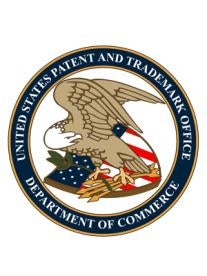On May 5, 2016, the USPTO published a Memorandum to the Patent Examining Corps titled “Formulating a Subject Matter Eligibility Rejection and Evaluating the Applicant’s Response to a Subject Matter Eligibility Rejection.” The Memorandum provides instructions for examiners to follow when applying the two-step eligibility test described in the USPTO’s Subject Matter Eligibility Guidance documents published over 2014 and 2015. If followed by effective implementation, the Memorandum will provide welcome relief to patent applicants concerned about rebutting insufficiently formulated rejections under 35 U.S.C. § 101. The USPTO also published six new Subject Matter Eligibility Examples applicable to the Life Sciences, including the fields of precision medicine and companion diagnostics.1,2 Here are some quick takeaways.
USPTO sees opportunity to improve eligibility examination quality
The Memorandum to the Patent Examining Corps discusses how an examiner should formulate and support a prima facie subject matter eligibility rejection. In formulating the rejection, the examiner has to, among other things, make the following findings:
-
Identify the claim element(s) that allegedly constitutes a judicial exception and explain why the claim element is considered a judicial exception (i.e., abstract idea, law of nature, or natural phenomenon). The Memorandum indicates that citing to a supporting court decision is “a best practice that will advance prosecution.”
-
Identify and evaluate additional elements recited in the claim as an ordered combination to determine whether the claim as whole recites something more than the judicial exception. “[W]hile individually-viewed elements may not appear to add significantly more, those additional elements when viewed in combination may amount to significantly more than the exception by meaningfully limiting the judicial exception.”
To support a finding that the additional elements taken individually and in combination are no more than well-understood, routine, conventional activity, the examiner has to “explain why the courts have recognized, or those in the relevant field of art would recognize, those claim limitations as being well-understood, routine, conventional activities.” According to the Memorandum, the evidence needed to support his/her finding(s) does not require a prior art search, as the evidence, for example, may come from the applicant’s specification.
Once the evidence is identified, the Memorandum clarifies that the mere reporting of a particular laboratory technique in a publication or its use in a few laboratories cannot support a finding that the technique is well-understood, routine, and conventional activity. Rather, the evidence must show that “the additional element is widely prevalent and its combination with any other additional element is well-understood, routine, conventional activity.”
USPTO considers certain aspects of diagnostic assays to be patent eligible
The USPTO’s six new Subject Matter Eligibility Examples: Life Science cover a variety of claims from the fields of precision medicine and companion diagnostics (Examples 29 and 31), vaccines (Example 28), and food products (Example 30). While the Examples do not have the force of precedent, they can nevertheless guide prosecution strategy in the evolving patent eligibility environment. For example, the much anticipated analyses of sample precision medicine and companion diagnostic method claims suggest that the following types of claims may be considered patent eligible:
-
claims directed to the analytical process underlying a diagnostic assay, for example, the detection of a protein using an antibody, provided they do not recite a mental step, abstract idea, or natural law related to establishing a diagnosis (Example 29, claim 1 and Example 31, claims 75 and 85);
-
claims directed to a diagnostic assay that rely on an analytical method or reagent that was not well-understood, routine, conventional at the time of filing the application (Example 29, claims 3 and 4 and Example 31, claims 70 and 80); and
-
claims directed to a method of treatment that recite a companion diagnostic assay (Example 29, claims 5 and 6).
Practice considerations
Subject matter eligibility remains a rapidly changing area of patent law. The Memorandum and new Life Sciences Subject Matter Eligibility Examples reflect the USPTO’s application of current § 101 case law.3 Until (and if) the USPTO issues further guidance to its Examining Corps or a new controlling appellate decision emerges, patent applicants can consider the following when developing their prosecution strategy:
-
use the Memorandum to rebut eligibility rejections that fail to make the findings necessary to support a prima facie case;
-
beware of making statements in the specification that a particular step in a process may be performed by any method “well-known” to those of skill in the art;
-
consider protecting diagnostic assays with method claims limited to the analytical assay only, as method claims that do not recite a comparison step (abstract idea) or diagnostic correlation (law of nature) will seemingly pass eligibility before the USPTO; and
-
for diagnostics used in conjunction with a particular drug, pursue method of treatment claims comprising steps for both performing the diagnostic assay (e.g., to identify subjects eligible for treatment) and treating the subject.
1 The Memorandum and Subject Matter Eligibility Examples are not legally binding. Applicants can challenge the USPTO in their implementation.
2 The Memorandum and Subject Matter Eligibility Examples are available here.
3 The USPTO maintains a listing of Subject Matter Eligibility Court Decisions here.





 i
i

